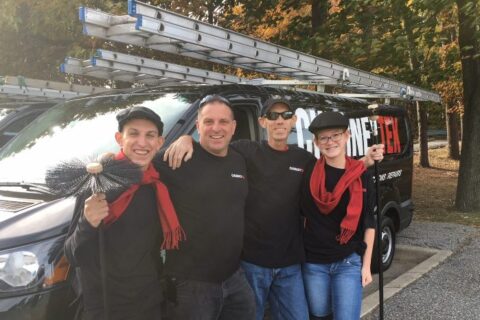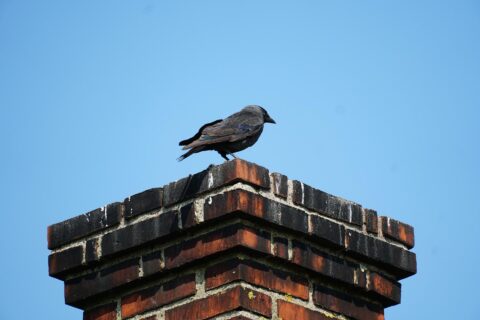What is Creosote Buildup and Why Is It Dangerous?
When you burn a fire in your fireplace, you trust that the smoke it gives off travels up your chimney and out into the open air outside your home, right? But unfortunately, that’s a very simplistic version of the process — it is, after all, not as neat and clean as all that. While fires can create a comforting ambiance and even heat our homes, they are not without their drawbacks — specifically, they make a little bit of a mess that needs to be cleaned up on a regular basis.
And this isn’t just about ash and soot. Burning a fire in your fireplace can also leave behind something called creosote, a naturally occurring byproduct of combustion that is reasonably harmless if you take care of it the way you’re supposed to, but very dangerous if neglected.
Here’s what you should know about creosote and why it’s dangerous, as well as what you can do to diligently remove it the way you need to.
Creosote: What’s That?
While by-products of combustion like soot and ash will make your fireplace and chimney dirty, they aren’t quite the problem that creosote is. Every fire you burn is going to create at least some small amount of this byproduct, which almost resembles hardened black tar when it builds up on surfaces. This is because creosote, like ash, is found only in trace amounts as the smoke carries it up the chimney — it’s not until it meets with the elements at the very top, like cold and moisture, that it hardens along the inner lining of the chimney.
Any kind of fire will create creosote, so it doesn’t matter whether you’re using coal, pellets, natural gas, or propane; however, wood-burning fires are the most aggressive creators of creosote. So if you’re burning logs all winter long, chances are good that you’re creating more creosote than somebody who has a pellet fireplace.
That’s not to suggest, of course, that people with pellet or gas fireplaces don’t need to worry about creosote — they absolutely do, and having their chimney swept should still be on their annual list of home maintenance responsibilities. They simply aren’t as likely to see quite as much buildup as those who burn wood.
Why is Creosote Dangerous?
As stated earlier, ash and soot make your fireplace (and chimney) all dirty and dusty, but they aren’t the threat that creosote is. The problem is that creosote is extremely flammable. In fact, an estimated 25,000 fires are caused by creosote ignition according to the Chimney Safety Institute of America. That means if it’s been a while since you’ve had your chimney swept, you could be dealing with an unsafe amount of creosote in your chimney.
Creosote buildup happens in three stages, and the first two stages — Stage 1 creosote and Stage 2 creosote — are easy to handle. Similar to ash and soot, these stages of creosote buildup can be swept away with a specialized brush by a certified chimney sweep.
When you need to be concerned is once your creosote buildup hits Stage 3, the kind known as glazed creosote. This type of creosote will be tough, shiny, and firmly fixed to the inside of the flue line. Not only is this type of creosote much more flammable but also it’s more difficult to remove. It requires special chemicals and tools above and beyond a simple brushing.
How Can I Avoid Creosote Buildup?
Although all chimneys will have some degree of creosote buildup, and will therefore require annual sweeping, there are proactive ways you can reduce the creosote your fires give off. Consider these easy choices you can make:
- Avoid moist wood: Ideally, your firewood should be brown, dry, and seasoned well. If it’s freshly cut, slightly moist, or even green, then it’s going to be harder to burn. When the fire burns more intensely to consume the wood, it gives off additional creosote.
- Put your fires out promptly when you’re done: It’s sometimes tempting to let a low-burning fire linger in the fireplace, especially if you’re preparing to leave the house soon or retire to bed. Unfortunately, these long, low-temp fires result in much more creosote than a hotter fire. Once your fire is dying down, sift the cinders around to extinguish them more quickly.
- Resize your flue: If your flue is too large, it might let in more cold outside air. This will cause your creosote to cool prematurely, and much more of it will build up on the inside of your flue compared with a chimney that has a smaller flue.
If it’s been a long time since creosote started building up in your chimney without being cleaned, you might potentially be looking at damage to your flue that needs to be repaired. Avoid this kind of problem by scheduling an annual chimney sweeping in the spring (after using your fireplace all winter) or in the fall (before you start to use it).


